

— Products —
 Consumer hotline +8618073152920
Consumer hotline +8618073152920 WhatsApp:+8615367865107
Address:Room 102, District D, Houhu Industrial Park, Yuelu District, Changsha City, Hunan Province, China
All products
Solar radiation sensors are based on the principle of thermoelectric induction and can accurately measure a wide range of solar radiation types for use in solar energy utilisation, meteorology, agriculture and other fields. The product supports multiple output forms, including RS485, for easy integration with platforms such as Arduino. High sensitivity, wide measuring range and excellent stability for extreme environments. Connecting with Arduino only requires simple programm···
Tel/WhatsApp:+8615367865107
Email:Arvin@niubol.com +Nearly 100 partner company in more than 68 countries. We are committed to providing high-quality, practical products to meet your needs and help you solve problems.Product Details
Solar radiation sensor is a high-precision measuring instrument designed based on the principle of thermoelectric induction, which can accurately measure the total radiation, reflected radiation, scattered radiation, infrared radiation, visible light, ultraviolet radiation, long-wave radiation and other types of radiation from the sun. This product is suitable for solar energy use, meteorology, agriculture, aging of building materials and atmospheric pollution, providing you with reliable solar radiation energy measurement solutions.
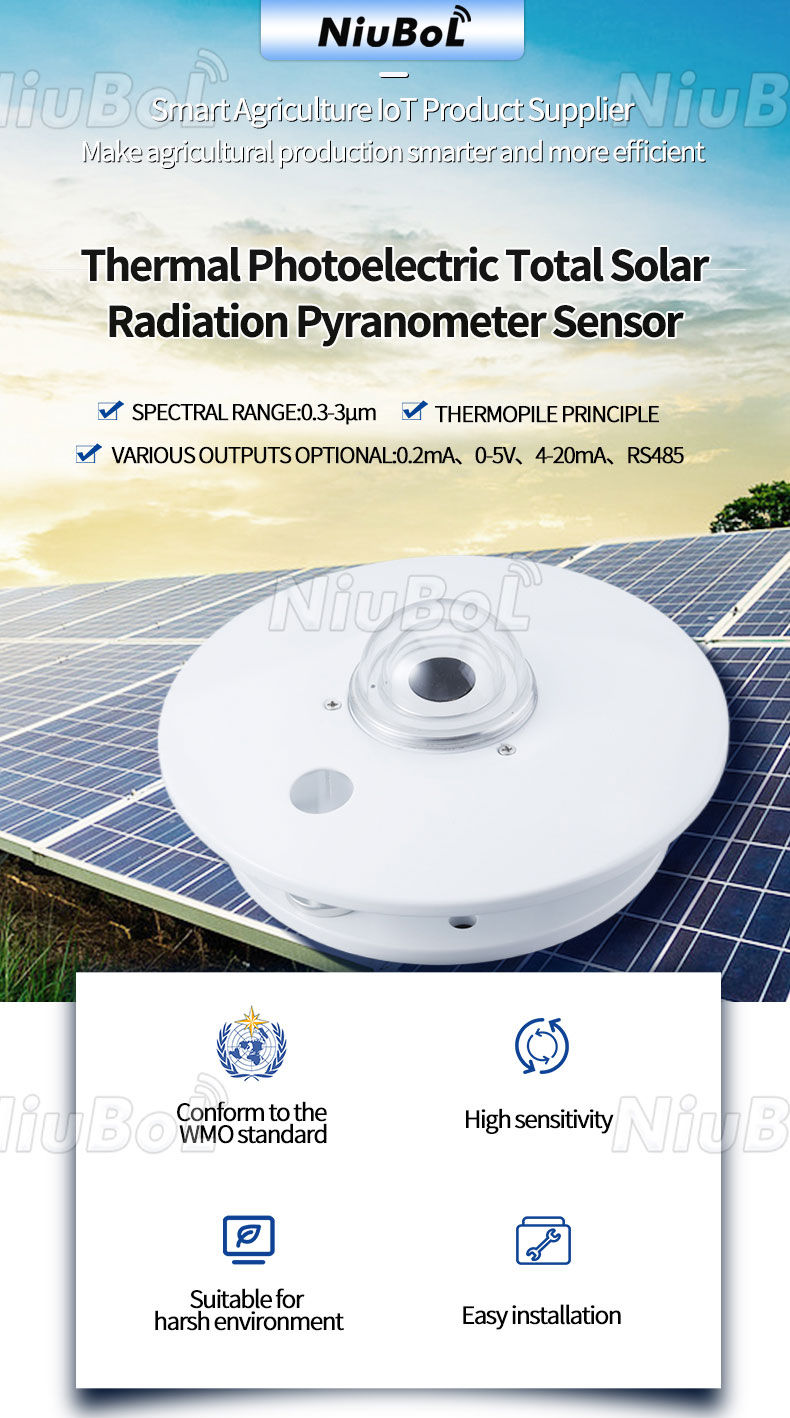
Core sensing technology:
Multi-Contact Thermopile Design: At the heart of the sensor is a wire-wound electroplated multi-contact thermopile with a highly absorbent black coating to ensure maximum radiation absorption.
Differential Potential Principle: The hot junction is directly exposed to solar radiation, while the cold junction is deep inside, the temperature difference between the two produces a stable potential difference, which is converted into an electrical signal for accurate quantification of the radiation.
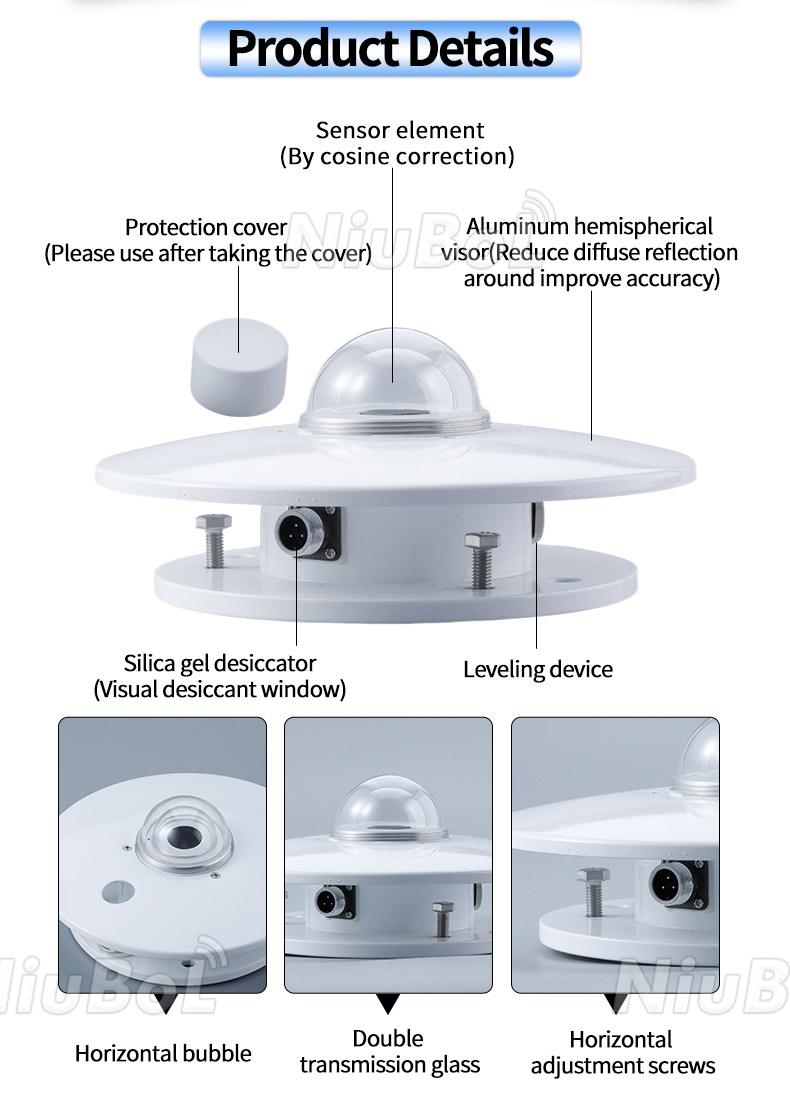
Double glass cover design:
Reduces air convection interference: The double-layer structure effectively isolates the sensor from external environmental influences, and the inner layer is designed to prevent interference from the outer shell's own radiation, ensuring the purity of the measurement.
Solar radiation senso is versatile:
Comprehensive radiation measurement: from total radiation to scattered, reflected and even specific bands of radiation, it is widely used in solar panel efficiency assessment, climate change research, crop growth monitoring and so on.
Flexible mounting: horizontal, tilted or at a specific angle, it can capture radiation data accurately, and with the addition of a shading ring, it can accurately measure scattered radiation.
| Sensitivity: | 7-14μV/w.m-2 |
| Spectral range: | 0.3-3μm |
| Measuring range: | 0-2000W/m2 |
| Power supply: | DC 5V / DC 12V / DC 24V |
| Output: | Current (4-20mA), Voltage (0-2.5V / 0-5V / 0-20mV), RS485 |
| Response time: | ≤35 seconds (99%) |
| Internal resistance: | about 350Ω |
| Annual Stability: | ≤±2% |
| Cosine response: | ≤7% (at 10° sun altitude angle) |
| Azimuth response error: | ≤5% (at 10° solar altitude angle) |
| Temperature characteristics: | ±2% (-10℃~+40℃) |
| Operating ambient temperature: | -40℃~+50 |
| Non-linearity: | ≤2% |
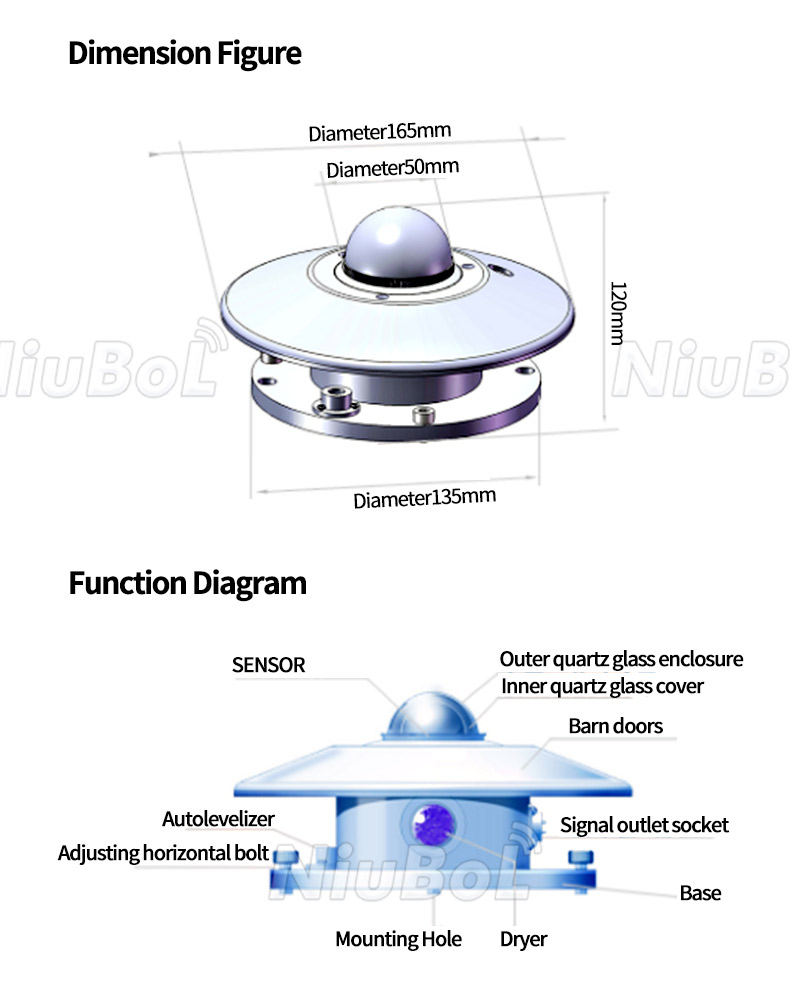
1. High sensitivity: 7 ~ 14μV / W-m ², to ensure that even small radiation changes can be accurately captured.
2. Wide measurement range: 0-2000W/m², covering the radiation measurement needs in daily and extreme conditions.
3. Multiple output forms: support DC 5V/12V/24V power supply, as well as current and voltage output, RS485 communication interface, easy to integrate with modern data acquisition systems, such as the Arduino platform, through simple programming to achieve real-time data transmission and processing.
4. Excellent stability: annual stability of ≤ ± 2%, to ensure the accuracy of long-term monitoring.
5. Adapt to harsh environments: Operating temperature range -40℃ to +50℃, fearless of extreme climate challenges.
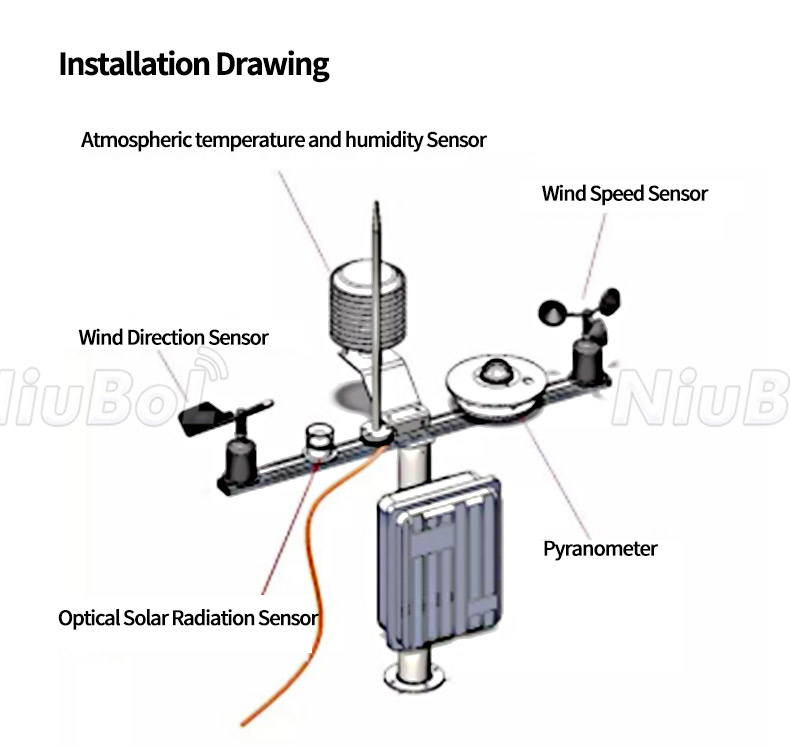
- Solar radiation sensor (with RS485 output)
- Arduino board (such as Arduino Uno, Arduino Mega, etc.)
- RS485 conversion module
- Appropriate connecting cables
- Power supply
1. Power supply connection:
- Connect the VCC and GND pins of the RS485 converter module to the 5V and GND pins of the Arduino respectively.
2. RS485 signal line connection:
- Connect the A (non-inverted) and B (inverted) wires of the solar radiation sensor to the corresponding terminals of the RS485 converter module.
3. Converter module and Arduino connection:
- Connect TXD of the RS485 conversion module to digital pin 10 (RX) and RXD to digital pin 11 (TX) of the Arduino.
4. Programming:
- Use the Arduino IDE to write a programme to configure the serial communication parameters, read and parse the sensor data.
include <SoftwareSerial.h
// Define the Arduino pins that connect to the RS485 module.
const int rs485RxPin = 10; // RX
const int rs485TxPin = 11; // TX
SoftwareSerial rs485Serial(rs485RxPin, rs485TxPin); // create the soft serial object
void setup() {
Serial.begin(9600); // initialise serial communication for debugging purposes
rs485Serial.begin(9600); // RS485 baud rate, match sensor settings.
}
void loop() {
if (rs485Serial.available()) {
String data = rs485Serial.readStringUntil(‘ ’); // Read RS485 sensor data.
Serial.println(data); // process and display the data
}
}
Debugging and testing: Upload the code to Arduino, start the programme and observe whether the data output is as expected. Adjust the sensor position or parameter settings as needed to get the best measurement results.
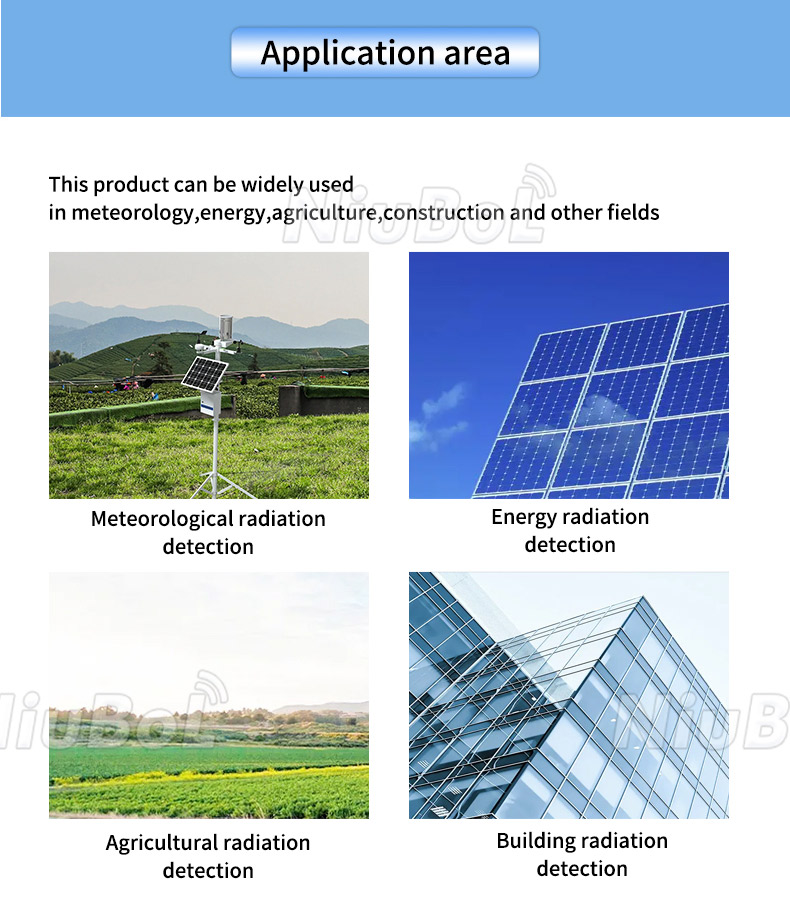
- Solar energy utilisation: assessing the efficiency of solar panels.
- Meteorological observation: monitoring changes in solar radiation, providing data support for weather forecasting.
- Agricultural production: guide crop planting and irrigation.
- Building material aging test: assess the aging degree of materials under solar radiation.
- Atmospheric pollution monitoring: analysing the relationship between solar radiation and atmospheric pollution.
Solar radiation sensors, to provide you with accurate and stable solar radiation energy measurement, to help you better carry out related research and applications. Buy now and start your solar radiation monitoring journey!
Sensors & Weather Stations Catalog
Agriculture Sensors and Weather Stations Catalog-NiuBoL.pdf
Weather Stations Catalog-NiuBoL.pdf
Related recommendations
 Multi-Depth Soil Sensor RS485
Multi-Depth Soil Sensor RS485 TDR Soil Moisture Sensor
TDR Soil Moisture Sensor Pyranometer Solar Radiation Sensors
Pyranometer Solar Radiation Sensors Soil ph sensor
Soil ph sensor Tipping Bucket Rain Gauge
Tipping Bucket Rain Gauge Air Temperature and Humidity Sensor
Air Temperature and Humidity Sensor
Screenshot, WhatsApp to identify the QR code
WhatsApp number:+8615367865107
(Click on WhatsApp to copy and add friends)